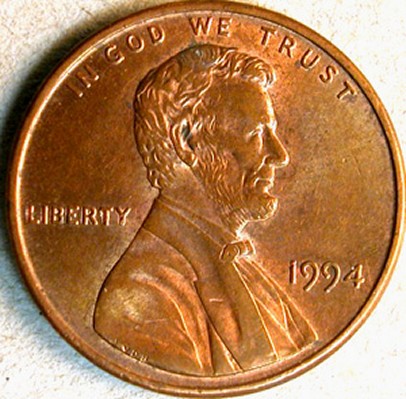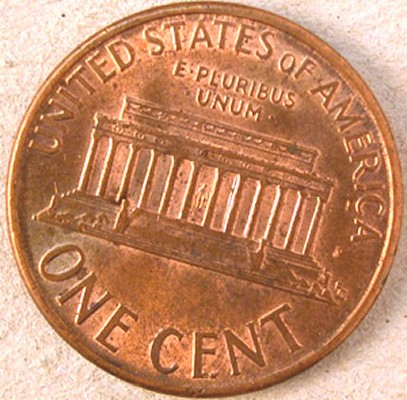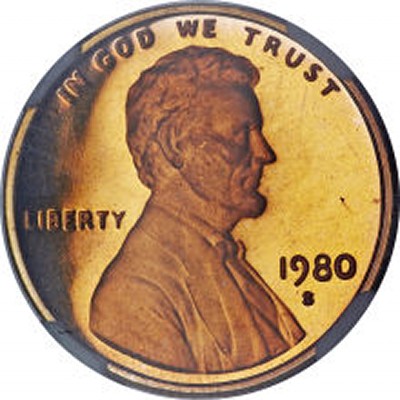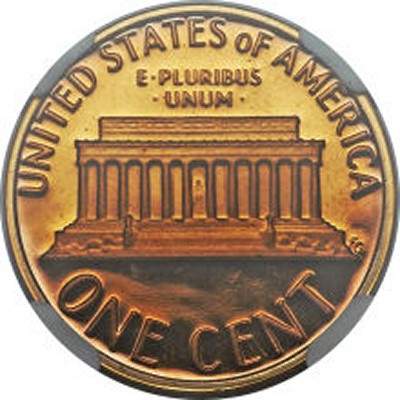PART IV: Die Errors:
Rotated Die Error:
Stable Rotation
Definition: In a rotated die error, one of the dies spins around its vertical axis. In the case of a normal, in-collar rotated die error, it is impossible to determine which die has rotated. Complex and compound rotated die errors where the die rotation is combined with at least one other error do allow us to determine which die rotated. In the vast majority of cases, the hammer die is the culprit.
Rotated die errors can come about in at least three ways.
- A die can be installed in the wrong orientation relative to the opposite die;
- The “flat” on the shank of the die can be ground in the wrong spot relative to the design on the die’s working face. This will lead to incorrect installation.
- A die can work its way loose in its recess and rotate.
Die rotation errors can be stable or dynamic. Stable rotated die errors produce coins that show the same amount of rotation in each coin that is struck. This 1994 cent shows a stable rotated die error. Relative to the obverse die, the reverse die shows a 165 degree counterclockwise rotation.


The dies that struck this 1980-S proof Lincoln cent were installed in the medallic position. In other words, the obverse face and the reverse face both point north.
Images are courtesy of Heritage Auctions.

